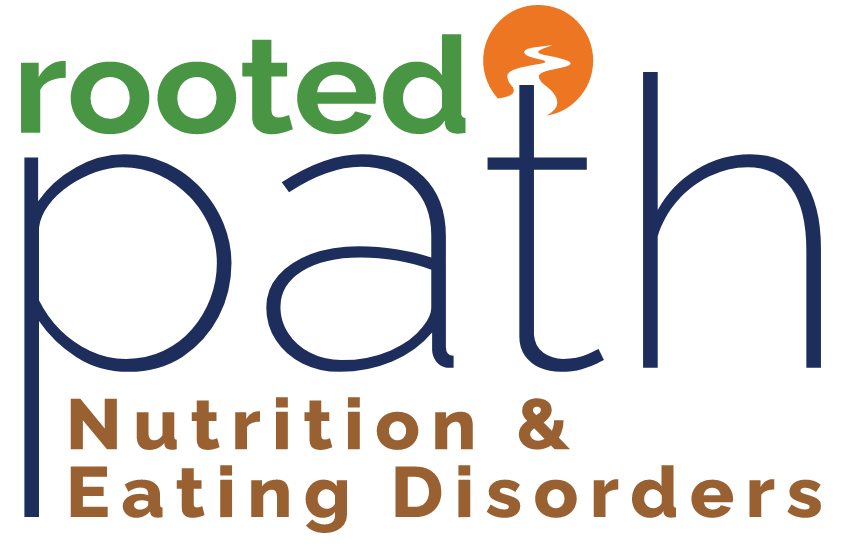When it comes to eating disorder recovery, it can be hard to know where to start. If you or someone you are close with are contemplating reaching out for support with your eating disorder, but are unsure of what type of support you need, then you are in the right place. Below we have laid out the varying types of care, and how they differ from each other. No two eating disorders look exactly the same, which is why there are so many different types of care and support modalities available. Use this guide to help you find the best place to begin your recovery, knowing treatment evolves throughout the process and you may jump around to different resources throughout your recovery.
Levels of Care
In-Patient:
This is considered the highest level of care, meaning this would be the recommended place to begin if your eating disorder has reached a point of severity which requires immediate refeeding. The in-patient setting is beneficial for those who need 24/7 hands on support, and who may require access to a feeding tube. This level of care is typically short-term, where the goal would be to move to a residential or partial hospitalization program (PHP) level of care after 1-7 days.
*This level of care is best for those who feel they can no longer function independently, and need immediate medical care to help get nourishment into the body.
Residential:
This is also considered a high level of care, allowing pts to have 24/7 care and observation. This level of care differs from in-patient in that it is meant to be longer term care, varying anywhere from 2 to 8 weeks, sometimes longer or shorter depending on patients’ unique needs. This level of care also includes group support, meaning that patients often share cohorts, meal spaces and living quarters with peers who are going through similar treatment. This level of care includes a full treatment team usually consisting of a dietitian, psychiatrist and therapist, along with a full nursing and medical team for regular vital checks. This level of care offers group education and therapy, as well as individual sessions with your treatment team.
*This level of care is best for those who could benefit from an entire treatment team, and a space away from home to focus fully on healing.
Partial Hospitalization (PHP):
This level of care offers all of the support that you would find at a Residential level of care, (full treatment team, supported meal spaces, regular vital checks, group education cohorts, individual treatment team appointments) without the need to stay full time at the facility. Partial hospitalization is typically eight hours per day, seven days a week, with opportunities to titrate away from full time treatment as you are ready. PHP often offers a variety of group education cohorts including skills lessons, body image work, nutrition education, yoga therapy, art therapy, processing groups, etc.
*This level of care is for those who feel they would benefit from a full treatment team and skills lessons while pausing from work and school to focus on their health, while feeling safe enough to have time to work independently on skills and treatment outside of the facility. This is also a great place for support after residential to help soften the step down from treatment.
Intensive Outpatient (IOP):
This level of care is similar to PHP with similar offerings of group education and skill courses alongside a full treatment team, but with less hours in the week. IOP treatments can range from 3-5 days per week and often offer options between morning, afternoon or evening time slots.
*This level of care would be great for someone who feels they could benefit from more support than an hour/week with their providers, but feels confident that they can function outside of treatment for the majority of their time. This level of care can be done alongside school or work, or done on its own.
Outpatient Providers:
There are a few different types of providers who may specialize in eating disorders, varying from Registered Dietitians, Licensed Nutritionist and Licensed Mental Health Counselor. It often can be helpful to see both a nutrition expert and a therapist when recovering from an eating disorder. Outpatient care is individualized and longterm, it is typically recommended to have an established outpatient care team indefinitely, allowing you to check in as needed for support.
*This level of care is great for someone who has acquired skills that allows them to nourish themselves adequately during their day to day, but may still struggle with high urges for eating disorder behaviors or have thoughts or beliefs that negatively impact their relationship with food and body.
Alternative/Supporting Treatment
Eating Disorder Support Groups:
There are support groups available for people who benefit from peer support during recovery. These groups vary from therapeutic led to peer led, and are often individualized depending on age and whether you have a preference for in-person or virtual support. These can be a great way to supplement outpatient or IOP levels of care, and can help folks find a community that has a positive impact on their treatment goals.
Masterclass/ Group Programs:
Another great way to supplement outpatient or IOP levels of care is with continued education. Many healthcare providers will host educational group programs or webinars that can be helpful when recovering from an eating disorder. These can range from all sorts of topics from sports nutrition to Unlearning Diet Culture, and many can even be covered fully by health insurance.
First Steps
Still unsure of where you belong? You’re not alone! The first step can be the most challenging, but in the end it doesn’t really matter which level of support you reach out to first. Take your best guess and the healthcare expert associated with that level of care can schedule you an intake, where they can get a better idea of whether that is the correct level of care for you.
Here at Rooted Path Nutrition and Eating Disorders, we are always assessing whether outpatient is still the most appropriate level of care, and will make recommendations to trusted providers within our network if we see fit. Don’t hesitate to reach out, our providers offer a free 20 minute meet and greet to assess if it could be a good fit – and if not we can point you in the right direction! Ultimately, where you begin is less important than where you end up. While the amount of resources available can be overwhelming, there is a wide variety available in order to treat peoples’ individualized needs. Taking that first step gets you closer to finding the place that works best for YOU.

